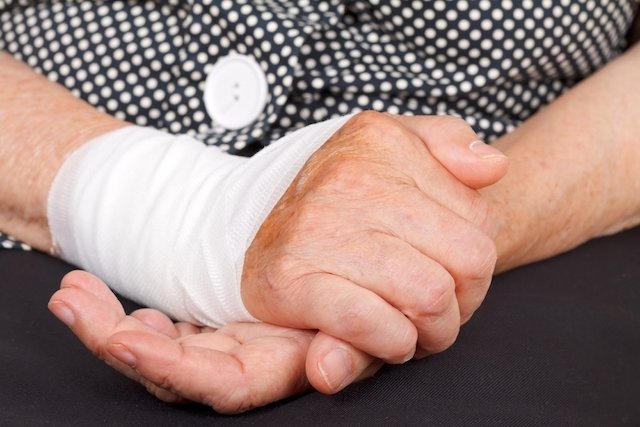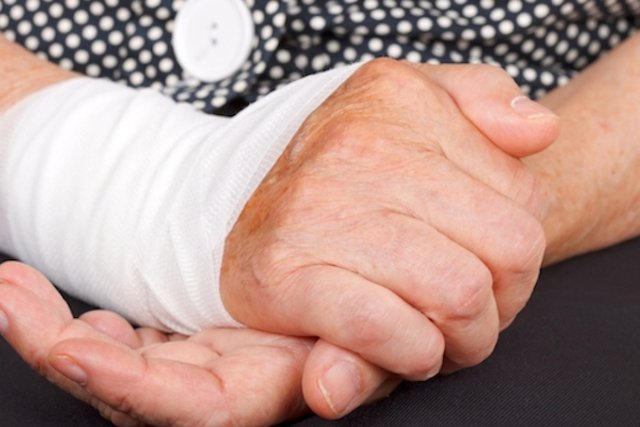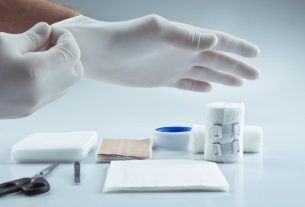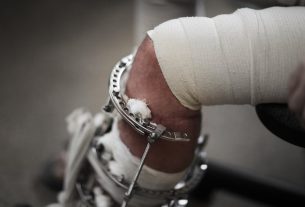When someone with diabetes is injured, it is very important to pay attention to the injury, even if it seems very small or simple, as in the case of cuts, scrapes, blisters or calluses, as there is a greater risk of the wound not healing properly and causing a serious infection.
This care can be carried out at home immediately after the injury occurs or as soon as a blister or hidden callus is discovered, for example. But in all cases it is very important to go to the dermatologist as soon as possible so that the wound can be evaluated and appropriate treatment can be indicated.
This happens because diabetes is a chronic disease that causes nerve damage and weakens the immune system over time, making the healing process more difficult. Furthermore, as the body is unable to use sugar, it accumulates in tissues and facilitates the development of bacteria in wounds, increasing the risk and intensity of infections.

First aid for wounds in diabetics
It is important to take some care if changes appear in the skin of diabetic people, such as:
- Wash the area using warm water and soap with a neutral pH;
- Avoid using antiseptic products on the wound, with alcohol, povidone-iodine or hydrogen peroxide, as they can damage tissues and delay healing;
- Apply antibiotic ointmentprescribed by the doctor, to try to prevent the development of an infection;
- Cover the area with sterile gauze, replacing it every day or as recommended by the doctor or nurse;
- Avoid putting pressure on the woundgiving preference to comfortable clothes or wide shoes that do not rub against the wound.
If you have a callus, for example, you should never shave it or try to remove it at home, as it can cause serious bleeding or facilitate the development of a serious infection there. Therefore, you should always consult a podiatrist to receive appropriate treatment and avoid complications that could lead to amputation of the foot.
What to do to avoid serious complications
Due to the high risk of the injury becoming infected or simpler situations such as cuts, blisters or calluses worsening into deep ulcers in the skin, it is important to observe the area more than once a day, looking for signs such as intense redness, excessive swelling of the wound. , bleeding or presence of pus, and worsening of the lesion or non-healing after 1 week.
Therefore, if any of these signs appear, it is important to go back to the doctor or go to the emergency room to change the treatment and start using antibiotics that can be ingested or applied to the wound to facilitate healing and eliminate bacteria.
The most common cases of serious injuries occur in the feet, as circulation to the feet, necessary to heal wounds, generally worsens over the years. Furthermore, wearing tight shoes makes it easier for calluses and wounds to appear, which can appear in inconspicuous places and go unnoticed, worsening over time. To avoid this type of situation, see how to take care of your diabetic foot.

Sign up for our newsletter and stay up to date with exclusive news
that can transform your routine!
Warning: Undefined array key "title" in /home/storelat/public_html/wp-content/plugins/link-whisper-premium/templates/frontend/related-posts.php on line 12
Warning: Undefined array key "title_tag" in /home/storelat/public_html/wp-content/plugins/link-whisper-premium/templates/frontend/related-posts.php on line 13




